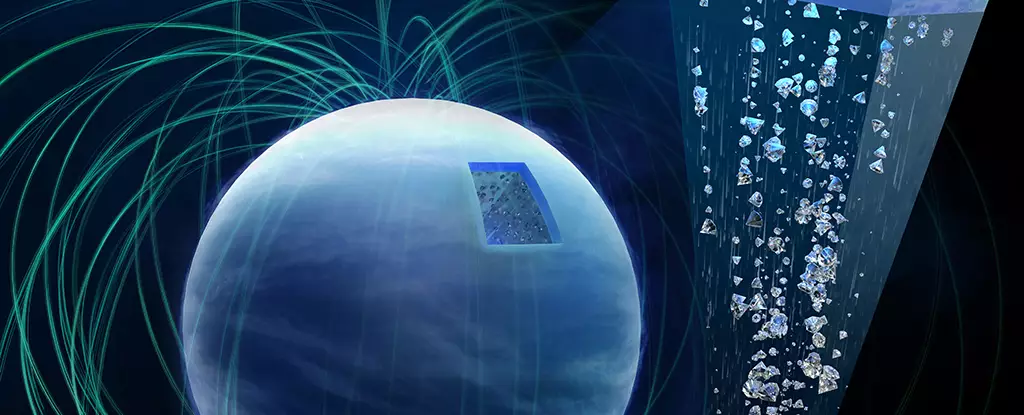In the vast expanse of the Universe, there exists a captivating sight that may seem straight out of a fantasy. Imagine taking a flight through the treacherous conditions of Neptune’s atmosphere, with diamond rain gracefully tapping at your window. A recent study conducted by an international team of researchers suggests that this extraordinary phenomenon of diamond rain may not be exclusive to Neptune alone. It could potentially be a common occurrence throughout the Universe. The study sheds light on the unique circumstances on giant, icy gas planets like Neptune and Uranus, where carbon atoms can link together to form solid diamond particles. In this article, we will explore the intriguing findings of this groundbreaking study and delve into the implications it holds for our understanding of the cosmos.
Carbon, a fundamental element of life on Earth, has the ability to crystallize into diamonds under extreme conditions. On gas planets such as Neptune and Uranus, the ultra-high temperatures and pressures within their atmospheres enable carbon atoms to connect with four others, resulting in the formation of particles of solid diamond. Previous assumptions held that the temperature and pressure thresholds required for diamond formation were significantly higher than what the study suggests. However, new experiments conducted in laboratory conditions have now revealed that these thresholds are lower than previously believed. This discovery opens up the possibility of diamond rain occurring on smaller gas planets, often referred to as ‘mini-Neptunes’, which are plentifully scattered beyond our Solar System.
The study’s findings not only expand our knowledge of local icy planets but also offer insights into the behavior of exoplanets. It may even shed light on the mysteries surrounding the magnetic fields of Uranus and Neptune. Unlike Earth, these ice planets possess asymmetrical magnetic fields, a phenomenon that has long puzzled scientists. Previous theories suggested that the magnetic fields of these planets were formed solely in their cores. However, the presence of diamonds formed at shallower depths challenges this notion. The descending diamond particles, coupled with the drag of gas and ice, could potentially influence the magnetic fields of these planets in ways that were previously unknown. Physicist Mungo Frost from the SLAC National Accelerator Laboratory suggests that this phenomenon might initiate movements within the conductive ices found on these planets, thereby impacting the generation of their magnetic fields.
To gain a deeper understanding of diamond formation, the researchers employed the use of the European XFEL (X-Ray Free-Electron Laser). This cutting-edge technology allowed them to monitor the formation of diamonds from a hydrocarbon compound called polystyrene film, subjected to immense pressures within a specially designed setup. By observing the process over an extended period, the team gained valuable insights into the formation of diamonds under specific conditions. These findings signify that although intense pressure and extreme temperature are still necessary factors, they may not need to be as severe as previously thought. Consequently, this suggests that diamonds can form at shallower depths within gas planets, challenging long-held estimations.
Although this study has shed light on the mysterious phenomenon of diamond rain and its potential influence on magnetic fields, many questions remain unanswered. Future research endeavors can delve deeper into the mechanisms behind diamond formation and the intricate relationship between diamonds and their respective planets. The allure of conducting actual field research in the atmospheres of Neptune and Uranus, where diamond rain is formed, is a tantalizing prospect that beckons scientists from across the globe to unravel this enigmatic puzzle further. Physicist Mungo Frost aptly sums up the intrigue surrounding the field of study, stating, “Diamond rain on icy planets presents us with an intriguing puzzle to solve.”
The discovery of diamond rain on gas planets opens up a realm of possibilities within the realm of astrophysics. The captivating sight of diamonds gracefully descending through Neptune’s atmosphere is a testament to the wonders of the Universe. This groundbreaking study has defied previous assumptions and expanded our understanding of diamond formation and its potential impact on planetary magnetic fields. As scientific knowledge continues to evolve, the prospect of further exploration and discovery into the mysteries of diamond rain awaits future generations of researchers and stargazers alike.



Leave a Reply